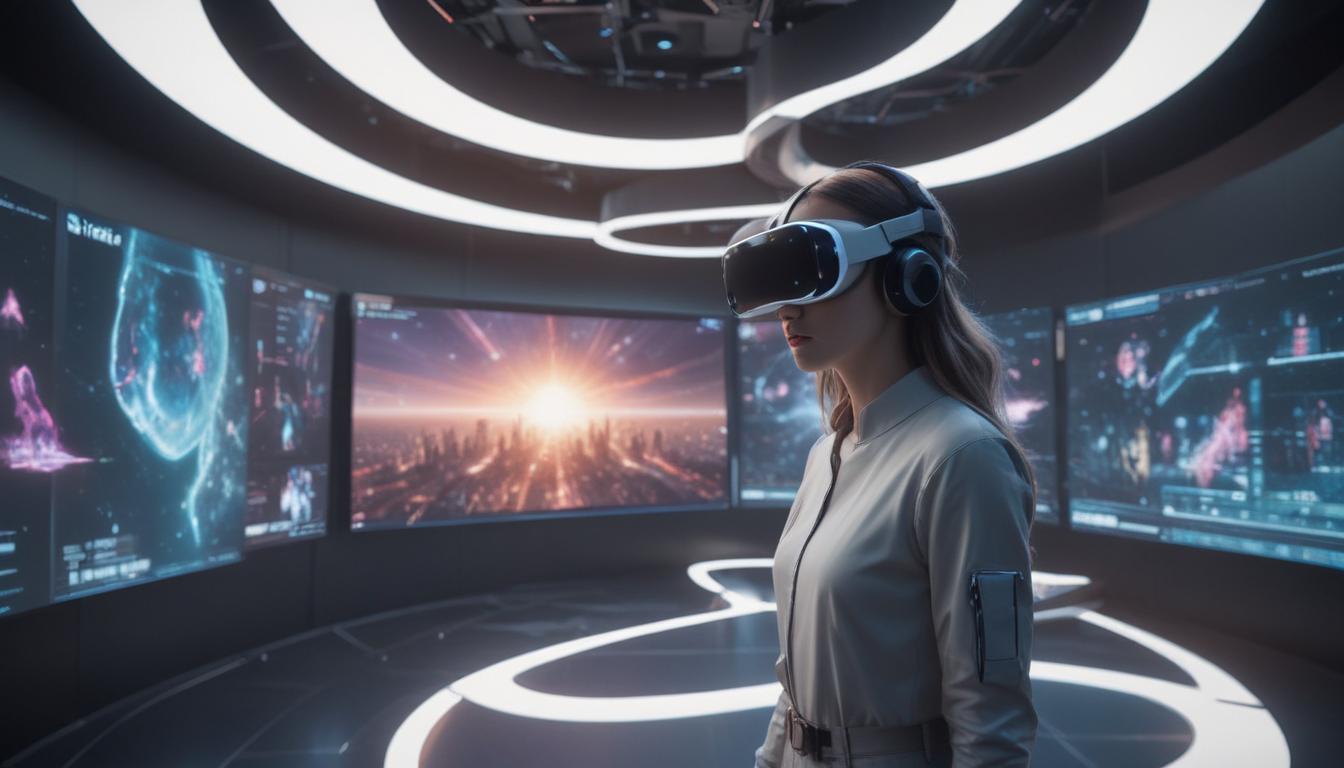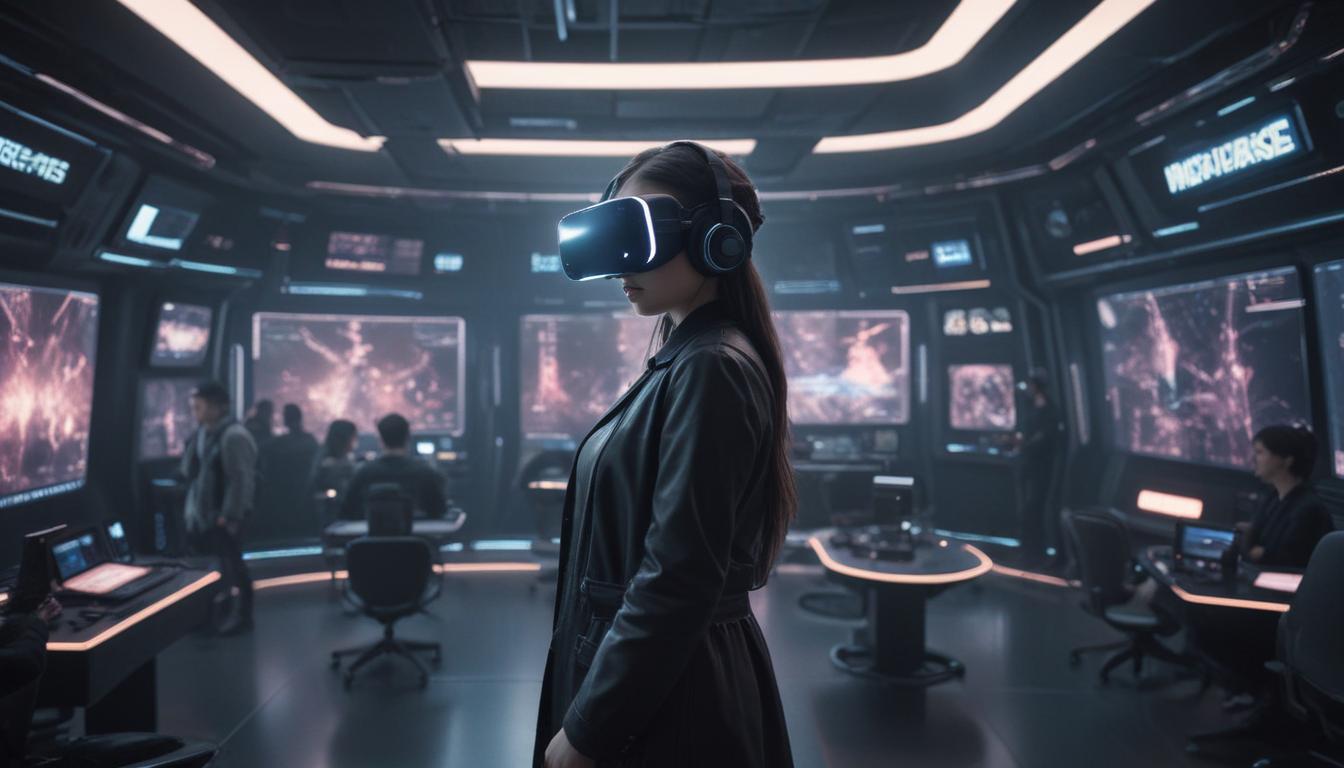Now Reading: Is the Metaverse Our Next Frontier?
- 01
Is the Metaverse Our Next Frontier?
Is the Metaverse Our Next Frontier?

The Metaverse A New Digital Frontier
Have you been hearing the term ‘Metaverse’ everywhere lately, from tech news to social media feeds? Does it feel like a complex, futuristic concept that’s just out of reach, leaving you feeling a little behind the curve? You are not alone. For many, the Metaverse sounds like something straight out of science fiction, a confusing buzzword with no clear definition, making it difficult to grasp its real-world importance.
This guide is here to cut through the noise and demystify the next great leap in our digital lives. We will break down exactly what the Metaverse is, the core technologies that power it, and why it represents so much more than just an advanced video game. Forget the confusing jargon and technical overload. By the end of this article, you will not only understand the fundamentals of this new digital frontier but also see its incredible potential to change how we work, play, and connect.
What Exactly Is the Metaverse
At its core, the Metaverse is best understood not as a single place or product, but as the next evolution of the internet. Think about how the internet evolved from text-based pages in the 1990s to the rich, multimedia, and social web we use today. The Metaverse is the next step in that progression, moving from a 2D internet we look at on screens to a 3D internet we can step inside and experience. It is a persistent, shared, and immersive virtual space where users can interact with each other, digital objects, and AI avatars in real time.
Unlike a video game that you can turn off, the Metaverse is envisioned as an always-on universe that continues to exist and evolve even when you are not logged in. Imagine a network of interconnected virtual worlds where your digital identity, or avatar, and your digital assets can move freely from one experience to another. It is a place for socializing with friends in a virtual cafe, attending a concert with thousands of people, collaborating with colleagues in a virtual office, or shopping in a digital mall. It aims to create a sense of genuine presence, making you feel like you are truly there with other people in a shared space.

The Building Blocks of This New Reality
The grand vision of the Metaverse is not being built on a single technology but is a convergence of several powerful and maturing innovations working in concert. These technologies are the essential pillars that make an immersive, persistent, and economically viable digital world possible. Without them, the Metaverse would remain firmly in the realm of fiction. Understanding these components is key to grasping how this new reality will function and grow.
Each piece of this technological puzzle plays a distinct and vital role. Virtual and Augmented Reality hardware act as the gateways, providing our senses with access to these digital realms. Artificial Intelligence (AI) serves as the engine that can create dynamic worlds and intelligent non-player characters. And perhaps most importantly, blockchain technology provides the economic and social foundation, enabling true digital ownership and a functioning economy. Together, they create a framework for a universe that is not just immersive but also decentralized and user-owned.
Virtual and Augmented Reality The Gateway
Virtual Reality (VR) and Augmented Reality (AR) are the primary entry points into the Metaverse. VR provides total immersion by using a headset to completely replace your view of the physical world with a computer-generated one. When you put on a VR headset, you are transported to another place. You can be standing on the surface of Mars, walking through a digital art gallery, or sitting in a virtual meeting room with colleagues from around the world. It is about creating a powerful sense of presence and transportation.
Augmented Reality, on the other hand, does not replace your surroundings but overlays digital information and objects onto the real world. Think of the filter that puts virtual sunglasses on your face on social media or the popular game Pokémon GO. In a more advanced Metaverse context, AR could allow you to see navigation arrows on the actual sidewalk, view product information by just looking at an item in a store, or have a virtual co-worker’s avatar sit in the empty chair across from you. AR blends the digital and physical, enhancing our reality rather than replacing it.
Blockchain and NFTs The Foundation of Ownership
This is perhaps the most revolutionary component of the Metaverse. For decades, anything you “owned” online, whether a rare item in a game or a digital profile, was not truly yours. It was data on a company’s server, and they could delete it or change it at any time. Blockchain technology changes this dynamic completely by creating a decentralized and transparent system for verifying ownership. It is a shared, unchangeable public ledger that is not controlled by any single entity.
This is where NFTs, or Non-Fungible Tokens, come in. An NFT is a unique digital certificate of ownership that is stored on a blockchain. It can be attached to any digital item, such as a piece of art, a virtual plot of land, a unique avatar outfit, or a concert ticket. This means for the first time, you can have provable, true ownership of your digital assets. You can buy, sell, and trade them in an open market, creating a robust and functional economy that mirrors the real world. This is the key to moving beyond corporate-controlled platforms to a user-owned internet.
Why the Metaverse Matters Beyond Gaming
While gaming is a natural and popular early application of Metaverse technologies, its potential extends far beyond entertainment. The core value of the Metaverse lies in its ability to facilitate human connection and shared experiences in ways that were previously impossible. Imagine attending a family reunion with relatives scattered across the globe, all feeling as if you are in the same room, sharing stories and interacting in a meaningful way. It promises a new era for social interaction that transcends geographical boundaries.
This transformation will touch nearly every industry. In education, students could take virtual field trips to ancient Rome or conduct complex science experiments in a safe, simulated lab. In business, remote teams could collaborate on 3D models in a shared virtual workspace, fostering greater creativity and connection. Commerce will be redefined with virtual storefronts where you can try on digital clothing on your avatar before buying the physical item. The Metaverse has the potential to become a central hub for work, socializing, learning, and commerce, fundamentally reshaping our digital and physical lives.
Navigating Our Shared Digital Future
It is important to remember that the full, seamless vision of the Metaverse is still many years away. We are currently in its very early days, much like the internet in the mid-1990s. There are significant challenges to overcome, including creating hardware that is accessible and comfortable for everyone, ensuring different virtual worlds can work together, and addressing critical questions around privacy, safety, and digital ethics. Building this future will be a gradual and collaborative process.
The Metaverse is not a future that is being built in secret by a few tech companies; it is a developing frontier that we can all help shape. By taking the time to understand its core concepts now, you are positioning yourself to be an active participant rather than a passive observer. The conversations we have today about openness, ownership, and inclusivity will determine the kind of digital world our children inherit. Staying curious and engaged is the first step toward ensuring this new digital frontier is a positive and empowering one for everyone.



































